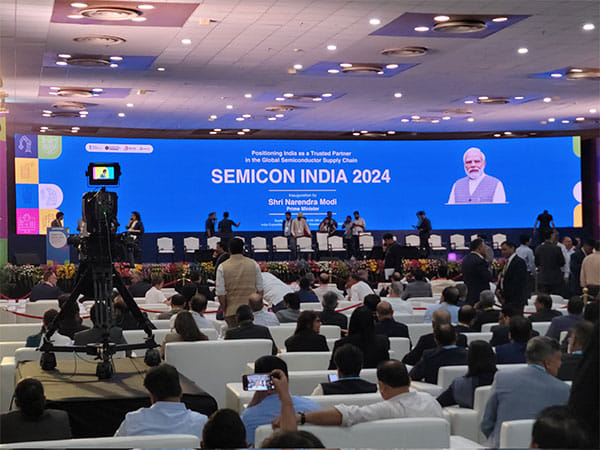Thank you dear subscribers, we are overwhelmed with your response.
Your Turn is a unique section from ThePrint featuring points of view from its subscribers. If you are a subscriber, have a point of view, please send it to us. If not, do subscribe here: https://theprint.in/subscribe/
There is now an opportunity for India to establish itself as a major player in the global semiconductor industry. The semiconductor market was valued at US$ 25 billion in 2022 in India and is already expected to grow to close to US$ 300 billion by 2032. However, there may be an opportunity to increase that growth. Semiconductors are now one of the world’s most traded products but still have one of the most complicated and geographically dispersed value chains. The aftershocks of the COVID-19 pandemic, global disruption of supply chains, rising production costs in China, and other geopolitical factors have forced the world to reconsider how global semiconductor value chains should be structured to ensure diversification, resilience, national security concerns, and cost competitiveness.
Several countries, including the United States, have recognized this opportunity and are working to establish India as a global semiconductor player. To prevent China from advancing in the field of artificial intelligence, the U.S. government has imposed new export restrictions on key technologies, including semiconductors. India is now increasingly becoming a viable alternative to China for companies seeking to diversify their supply chains. Among the many benefits India could provide to the U.S. is the potential to diversify its chip sources and thus reduce its reliance on Taiwan. In addition, the announcement by semiconductor manufacturer Micron that it will establish a large facility in India in 2023 indicates that the US private sector is also recognizing the value that India can add.
There is a huge need for skilled engineers in the semiconductor industry, and that is India’s
strength. With close to a million engineers required, the industry currently faces a global
shortage of talent. India, with a large number of graduates, could fill this gap. Additionally, this can also boost manufacturing activity not just in high-tech sectors in India, but also create significant employment multiplier effects. This has been proven in the U.S., where the semiconductor industry has a jobs multiplier of over 6, meaning that for every U.S. worker directly employed by the industry, 6 additional jobs are supported across the country. However, many Indian universities lack the infrastructure necessary to train graduates, thus resulting in an undertrained workforce. Investing in research labs through partnerships with universities would increase well-trained students entering the field.
Additionally, India needs to invest in low-cost energy, water accessibility, and infrastructure. Manufacturing semiconductors requires large amounts of water and power, so providing a continuous supply of electricity and water is crucial for attracting manufacturers to India. Over the past few years, the country has also made progress and improved its infrastructure. It has expanded its rail infrastructure by tripling the number of tracks laid daily since 2014. Since then, the country has also doubled its airports. Additionally, semiconductor fabrication operations require an enormous amount of electricity, so ensuring a stable, reliable, and consistent supply of electricity is crucial. Outages can cause significant damage to equipment, which can cost up to tens of millions of dollars. Over the past four years, while India's solar and wind production capacity has quadrupled, however, consistent power generation still remains a challenge. Creating semiconductor ecosystems that go beyond manufacturing is another challenge. It is crucial that India focus on not just attracting semiconductor manufacturers but also building a local value chains that support the overall industry by incentivizing the production of raw materials such as silicon wafers. The government should also encourage businesses to move manufacturing to India by improving the ease of doing business. By easing regulations and introducing tax incentives, India can attract semiconductor manufacturers and become a global leader in what could potentially be the largest industries in the world.
These pieces are being published as they have been received – they have not been edited/fact-checked by ThePrint.


